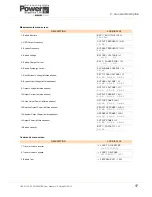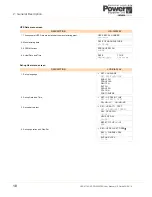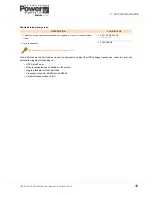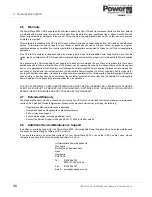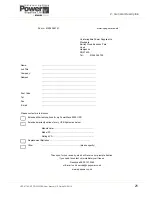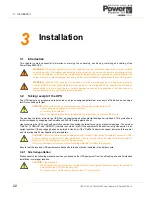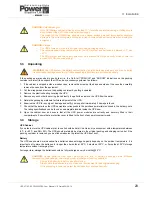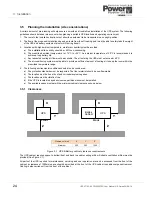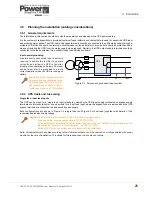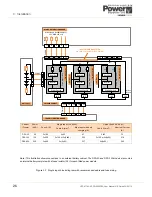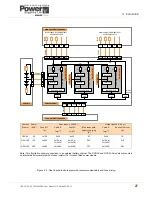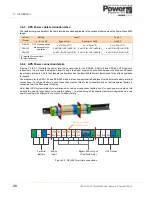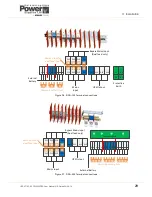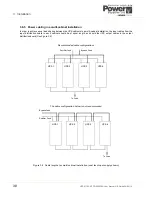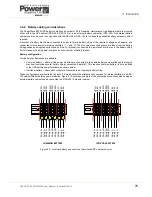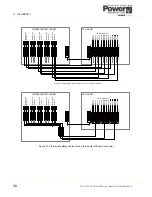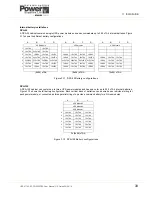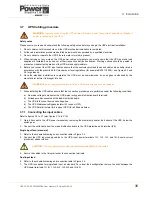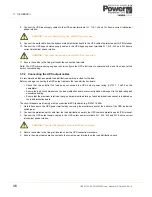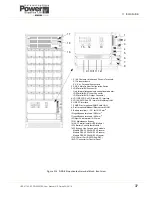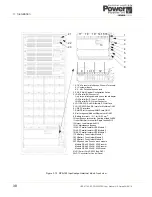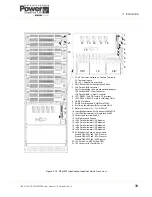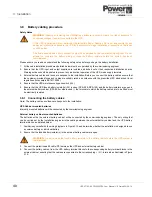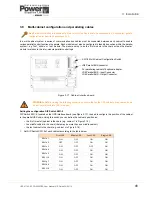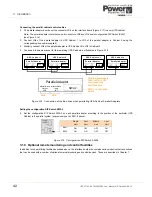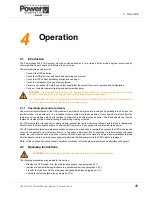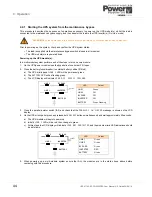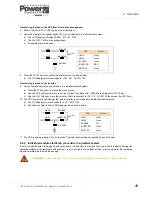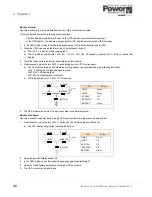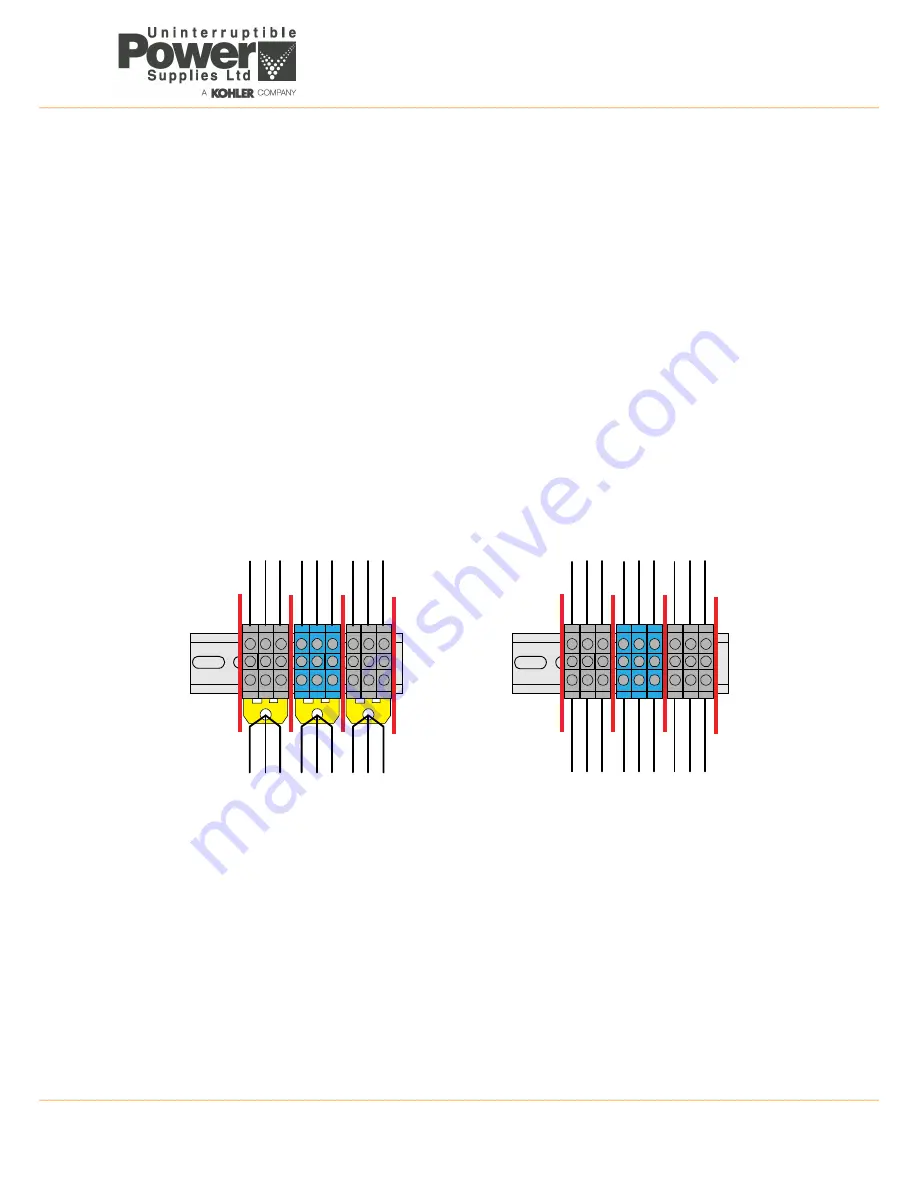
UPS471-02-00 PW9000DPA User Manual UK Dated 06/08/14
31
3: Installation
3.6.6 Battery cabling considerations
The PowerWave 9000 UPS battery comprises a number of (30-50) sealed, maintenance-free batteries that are mounted
either within the UPS cabinet (DPA-50 & DPA-150) or in an external battery cabinet(s) (DPA-250). An external battery
cabinet can also be used in conjunction with the DPA-50 or DPA-150 to increase the available battery autonomy time if
required.
A number of battery blocks are connected in series to form a battery string of the required voltage and capacity, and
connected to three power terminals annotated ‘+’ ‘–’ and ‘N’. The plus and minus connections are taken from the battery
string positive and negative extremities, and the ‘N’ terminal is connected to a point exactly mid-way in the battery string.
For this reason the string must comprise an even number of battery blocks.
Battery configuration
Two battery configurations are possible:
• Common battery – where all the power modules are connected to the same battery source (although that source
may itself comprise several battery strings connected in parallel). This requires ‘common battery’ links to be fitted
to the UPS battery power terminals, as shown below.
• Individual battery – where each module is connected to an individual battery string.
These configurations are illustrated in Figure 3.9, which shows the alternative connections for internal batteries in a DPA-
150 cabinet fitted with three power modules. Figure 3.10 shows an example of the alternative connections when using an
external battery cabinet shown connected to a DPA-250 (5 module) cabinet.
Figure 3.9 Internal battery connections (3-module UPS cabinet shown)
St
ri
n
g
1+
St
ri
n
g
2+
St
ri
n
g
3+
St
ri
n
g
1N
St
ri
n
g
2N
St
ri
n
g
3N
St
ri
n
g
1
‐
St
ri
n
g
2
‐
St
ri
n
g
3
‐
COMMON
BATTERY
UP
S1
+
UP
S2
+
UP
S3
+
UP
S1
N
UP
S2
N
UP
S3
N
UP
S1
‐
UP
S2
‐
UP
S3
‐
St
ri
n
g
1+
St
ri
n
g
2+
St
ri
n
g
3+
St
ri
n
g
1N
St
ri
n
g
2N
St
ri
n
g
3N
St
ri
n
g
1
‐
St
ri
n
g
2
‐
St
ri
n
g
3
‐
INDIVUAL
BATTERY
UP
S1
+
UP
S2
+
UP
S3
+
UP
S1
N
UP
S2
N
UP
S3
N
UP
S1
‐
UP
S2
‐
UP
S3
‐

